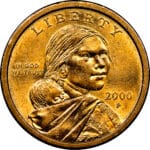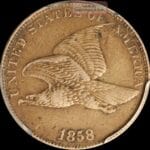Hey there, coin enthusiasts! Let’s explore a fascinating niche in the numismatic world: lowball coins. These often-overlooked pieces, bearing the marks of time and circulation, hold a unique allure for collectors. Join us as we delve into the captivating realm of lowball coins, uncovering their hidden value and the reasons behind their growing popularity.
Unveiling the Allure of Worn Treasures: What are Lowball Coins?
Lowball coins, often graded as PO01 by professional grading services like PCGS, represent the lowest echelon of coin grading. This designation signifies heavy wear, scratches, and other imperfections accumulated through years, even centuries, of circulation.
Why the Hype? The Appeal of Imperfect Coins
It might seem counterintuitive, but these “well-loved” coins hold a special place in the hearts of many collectors. Here’s why:
- Rarity: Coins in such worn condition are surprisingly rare. Most heavily circulated coins are lost, discarded, or melted down, making the surviving lowballs a testament to their resilience.
- Historical Significance: Each scratch and dent tells a story, whispering tales of the coin’s journey through time. They offer a tangible connection to the past, potentially having been used in significant transactions or even held by historical figures.
- Affordability: Compared to their pristine, high-grade counterparts, lowball coins are often significantly more affordable, opening the doors to collecting for a wider range of enthusiasts.
- Investment Potential: As with any collectible, rarity drives value. The growing interest in lowball coins, coupled with their scarcity, suggests the potential for future value appreciation.
Navigating the World of Lowball Coins: Grading and Authenticity
While the worn appearance of lowball coins is part of their charm, it also necessitates a system for authentication and grading. This is where organizations like PCGS and the Certified Acceptance Corporation (CAC) play a crucial role.
- PCGS Grading: PCGS uses a standardized grading system to assess a coin’s condition, even in the lowest grades. This ensures that collectors can confidently purchase lowball coins knowing they are authentic and accurately graded.
- CAC Verification: Collectors seeking an additional layer of assurance can submit their PCGS-graded coins to CAC for review. A “green bean” sticker from CAC signifies that the coin meets their stringent standards, often increasing its value.
Embarking on Your Lowball Journey: Tips for Collectors
Ready to explore the intriguing world of lowball coins? Here are some tips to guide you:
- Find Your Niche: The sheer variety of coins can be overwhelming. Consider focusing on a specific series, denomination, or historical period that resonates with you.
- Do Your Research: Just like any other collectible, lowball coin values can fluctuate. Take the time to understand the rarity, historical significance, and market trends of the coins that interest you.
- Connect with Fellow Enthusiasts: The coin collecting community is vast and welcoming. Joining online forums, attending coin shows, and engaging with other collectors provide invaluable opportunities to learn, share stories, and potentially uncover hidden treasures.
Beyond the Surface: The Undervalued Gems of Numismatics
Lowball coins are just one example of undervalued coins that pique the interest of savvy collectors. Here are a few others:
- Problem Coins: These coins often bear imperfections like cleaning marks or minor damage that deter mainstream collectors. However, for those in the know, a problem coin, especially if it’s a rare variety, can be a steal.
- Unpopular Series: Certain coin series or varieties might be overlooked by the masses, offering opportunities to acquire undervalued pieces with potential for future appreciation.
Remember: Knowledge is power. Before diving into any type of coin collecting, arm yourself with information about coin series, mintages, grading standards, and market trends. This will empower you to make informed decisions and potentially uncover hidden gems.
Frequently Asked Questions: Unraveling the Mysteries of Coins
Here are answers to some common questions about coins, from the smallest denominations to where to find those elusive dollar coins.
What is the lowest denomination of coins?
The answer depends on where you are in the world. Some of the smallest denominations include:
- Japan: 1 Yen
- South Korea: 1 Won
- United States: 1 Cent (Penny)
- United Kingdom: 1 Penny
- Eurozone: 1 Cent
Are Low Mintage Coins Always Valuable?
While a low mintage, meaning fewer coins were produced, often contributes to a coin’s value, it’s not the sole determining factor. Other factors like demand, condition, and historical significance also play a role.
Can I Get Dollar Coins at the Bank?
Yes, most banks in the US stock dollar coins and are happy to provide them to customers upon request. Calling ahead to confirm availability and any potential fees or minimums is always a good idea.
The Enduring Appeal of Lowball Coins: A Glimpse into the Past
Lowball coins, with their worn surfaces and rich histories, offer a unique perspective on numismatics. They remind us that value can be found in unexpected places, and that sometimes, the most captivating stories are etched into the imperfections.
- Unveiling Bernhard Caesar Einstein’s Scientific Achievements: A Legacy in Engineering - July 15, 2025
- Uncover who is Jerry McSorley: CEO, Family Man, Business Success Story - July 15, 2025
- Discover Bernhard Caesar Einstein’s Scientific Contributions: Unveiling a Legacy Beyond Einstein - July 15, 2025
















1 thought on “The Lowball Coin Revolution: Why Collectors Embrace Numismatic Underdogs”
Comments are closed.